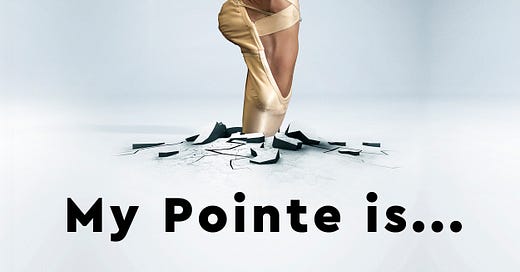Women also make dances
In the words of Taylor Swift, the poet laureate of men’s assorted bullshit, “this is exhausting.”
This spring, the Pennsylvania Ballet’s season will feature precisely zero ballets made by women choreographers. It will feature three separate nights of programming, combining 11 different ballets, all of them made by men, most of whom are white. This programming is, wait for it, a tribute to the company’s late founder, Barbara Weisberger.
The “Where are the women choreographers?” debate, also known as the “Did you know women also make dances?” discussion, or the “Is it really THAT HARD to hire women?” discourse, is decades old at this point. It was old in 2014, when New York City Ballet put together a program of works by five young white men and called it “21st Century Choreographers,” suggesting that in then-artistic director Peter Martins’ view, the 21st century was going to look an awful lot like the 20th, 19th, and 18th. (He then patted himself on the back for his purported daring and courage, telling the New York Times, "what can I say, I’m gutsy. I liked the idea of having all these people in their 20s, making new work. It shows the art form is really alive.”)
It’s old, but it’s clearly not over. And it’s exhausting.
The Pennsylvania Ballet spring season is a particularly egregious example, but not by much. It is not unusual to show up at the ballet (or on your couch, in this age of digital seasons) and see a series of short ballets, all of them by men. It’s totally normal to spend a night at the ballet — to hand over a sizeable sum of your hard-earned money — and not see a single piece of art created by a woman choreographer. In fact, according to the Dance Data Project, in the 2019-2020 session in the US, that happened 62% of the time. In an art form where women make up 70% of audiences.
This is meant to be fine. This is supposed to satisfy us. This is not meant to bother us, or strike us as strange.
It is not fine. It does not satisfy. It does not merely bother, it confounds. It rankles, it insults. It is not strange, it is embarrassing. Companies that do this should be embarrassed at their lack of creativity, their inability to do even the bare minimum to nod to the notion that women might have something interesting to contribute to this art form that is only possible because of women’s bodies.
I’m not saying men can’t make good and interesting dances; obviously, some of them can. But did you know that women also make dances, and that some of them are quite good? And that ballet is missing out, repeatedly shooting itself in the foot — a body part that ballet people value quite highly — by continuously commissioning and re-staging work from one very small slice of the population, over and over again, to the exclusion of everyone else?
White men are about a third of the U.S. population. Statistically, there’s just no way they’re making 100% of the ballet worth watching. Women choreographers, and especially women of colour, deserve better. Dancers deserve better. As audience members, we definitely deserve better.
And if, when I die, you stage a tribute to me that’s 100% made by men, I promise you I will haunt you forever.
That’s it from me this week. Thanks, as always, for reading.



